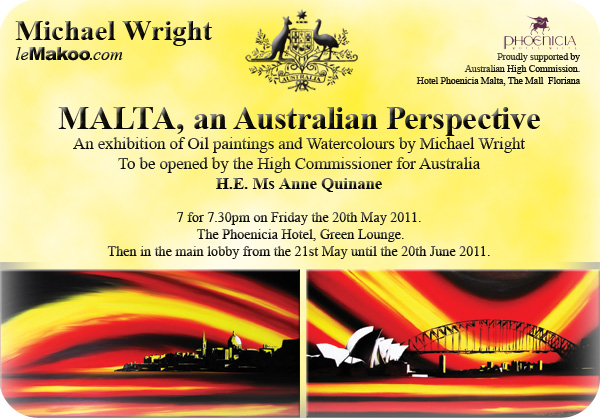
Sydney, sold. Valletta, sold. Both paintings 120x60cm Oil on canvas.
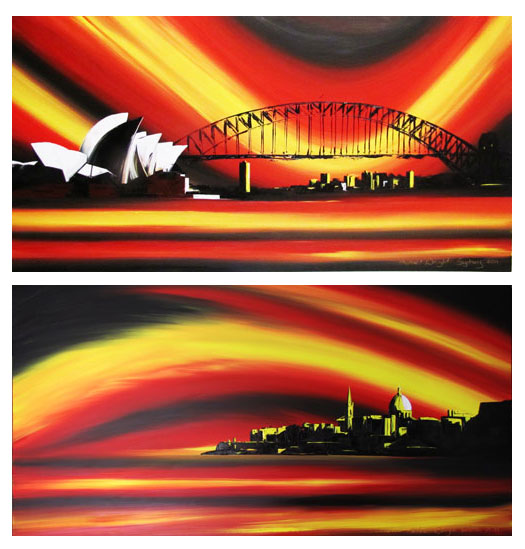
An opal-hearted country,
A wilful, lavish land-
All you who have not loved her,
You will not understand-
Though earth holds many splendours,
Wherever I may die,
I know to what brown country
My homing thoughts will fly.
Dorothea Mackellar
—————————-
Int sabiħa, o Malta tagħna!
Mhux għax Malti nfaħħrek jien;
issemmik id-dinja kollha,
magħruf ġmielek kullimkien.
Gan Anton Vassallo
Sydney and Valletta. Both 100x50cm Oil on Canvas. 600 euros each. (Sold)
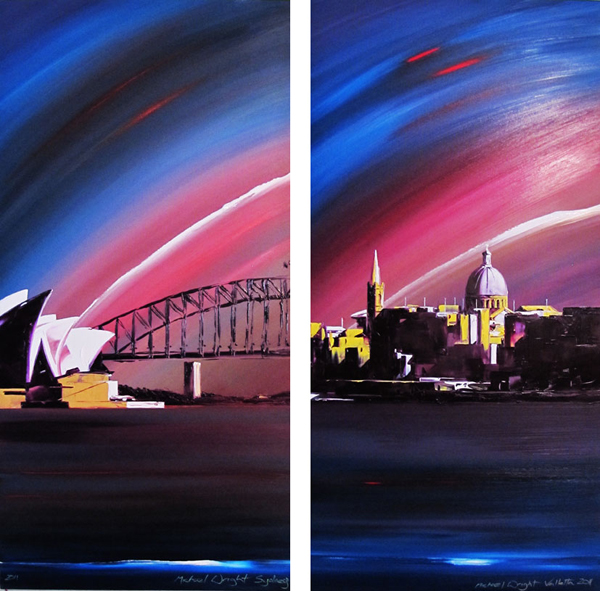
I believe that these two cities are the most stunning in the world from my perspective.It’s easy to use colour and space to invoke mood and tone. I think that it is the fact that both have a great deal of buildings, space and water. Whilst other cities tend to have only one focal point. Sure, there are other stunning cities in the world, but none that have that mix of landmarks and water that these two have.
Tall Poppy. 35x50cm Oil on canvas. (Sold)
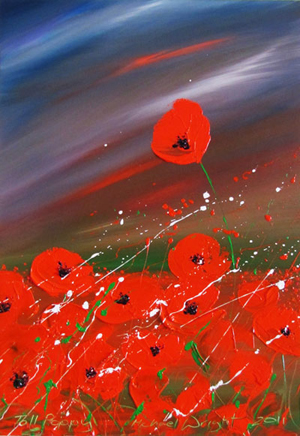
The Tall poppy syndrome is an Australian expression. If you feel your friend is getting too big for his boots or an unhealthy ego is developing, you cut him down to size. In Malta the expression is,” Mela Kibritlek rasek?”, which generally means the same thing.
Hibiscus 35x50cm Acrylic on canvas. (Sold)
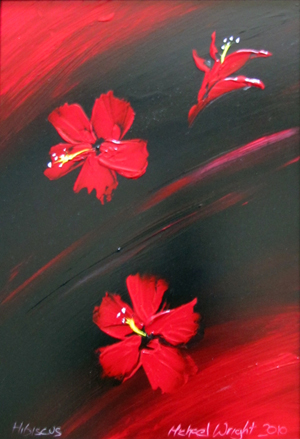
Hibiscus. A very common sight in both countries. Just one
of those little things that make you feel at home.
Filfla and Urulu. Both 30x40cm oil on canvas. (both sold)
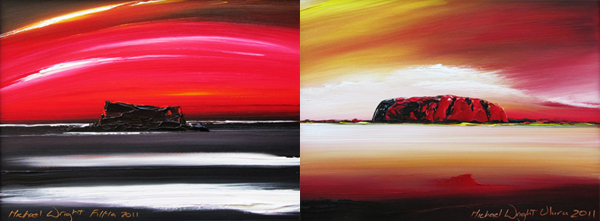
Two iconic Rocks. Filfla and Uluru (previously Ayres Rock before it was handed back to the indigenous people of Australia) Just the outlines are easily recognised by Australians and Maltese respectively. When I first saw Filfla I knew I was looking at an Icon, the same way that the shape of Uluru is etched upon my mind.
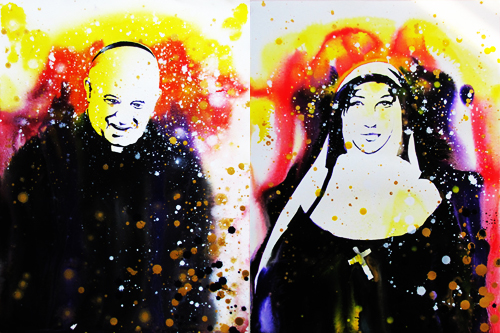
Watercolour and inks on paper.
Both countries have one saint. Mary Helen MacKillop (canonised on 17 October 2010) and George Preca. (Sold)
(canonised on 3 June 2007). One of Mary’s miracles was performed on a Maltese immigrant to Australia, Sophie Delezio. (Sold)
Mdina. 60x60cm Oil on canvas. (Sold)

There is nothing in Australia anything like Mdina. We never
really needed huge defensive positions to protect ourselves
against invaders. Mdina was inhabited and developed over
many centuries, far longer than the European age of
Australia.
Girls. 55x65cm Watercolour on Paper.
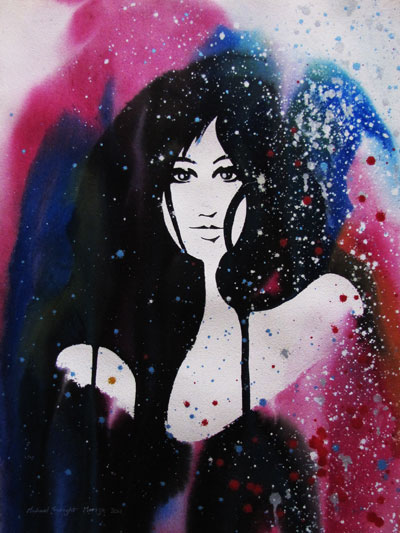
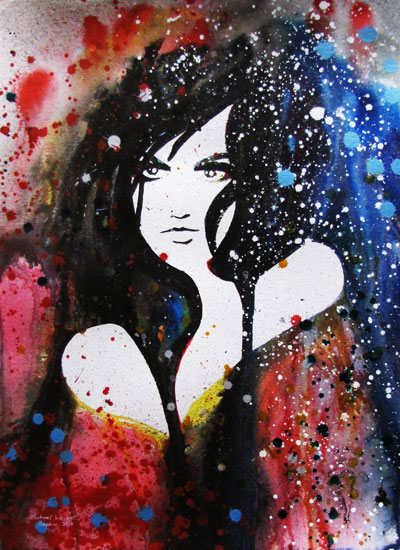
Girls. In order Marija and Sophie.
Marija was the most popular name in Malta for new borns in
2009. In Australia in 2010, first was Lily, 2nd Ruby and 7th
Sophie. From my experience Maltese girls are very refined in
their ‘look’ their hair/nails are always perfect. It’s definitely a
Mediterranean look whilst Australian girls tend to be a bit
more ‘outdoorsy’ a bit cheekier, more American
looking. And that’s all I’m saying before I get into trouble. (Sold)
Valletta White 100x60cm Oil on canvas. (Sold)
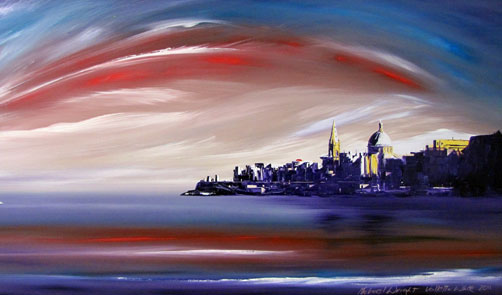
Valletta lends herself to be painted in many ways, at many
times of the day and from many positions. It is an intricate
city of sharp shadow and crisp light. I will never tire of
painting her.
Ned Kelly 30x40cm Oil on canvas. (Sold). Terraced House 30x40cm Oil on canvas. (Sold)
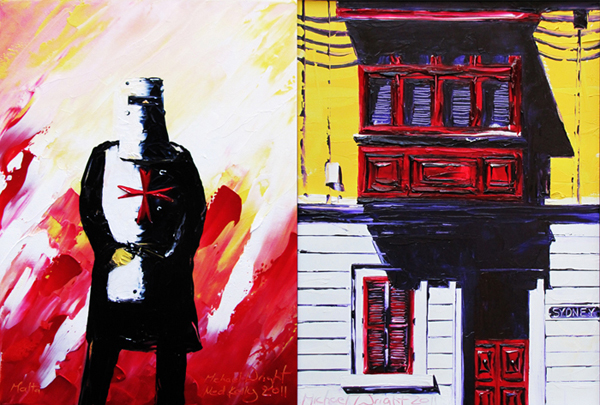
Arguably the two most famous historical events in Australia
and Malta are Ned Kelly and the knights of Malta
respectively. Ned Kelly was Australia’s only ever knight in
armor. Australian born of Irish Catholic decent, he took on
the authorities of the time and won himself everlasting fame
by wearing armor made from ploughshares. In his final shoot
out with an overwhelming number of policemen he suffered
multiple gunshot wounds to his arms and legs and was taken
prisoner, tried and hanged in Melbourne goal in 1880.
Ned symbolizes the Australian attitude towards authority and
is today revered as a cult hero. Here I have reborn Ned as a
Knight of Malta, fighting for what he believed in.
Terraced House
In Sydney I grew up in house no 148, we didn’t name our houses in Sydney. So imagine my surprise when I came to Malta and saw houses named after Australian Cities, Sydney, Perth, Hobart and Melbourne. We even named our house here in Malta Flame Trees, after an Australian tree.
Ghajn Znuber. 50x35cm Oil on canvas (Sold)
Smaller study 18x24cm (Sold)
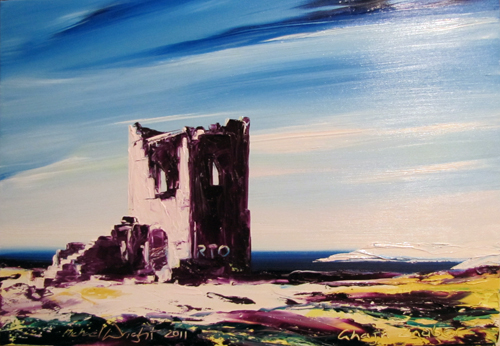
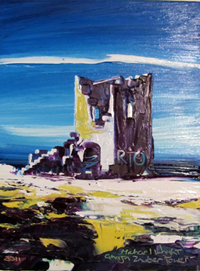
One of my favourite places in Malta, the plunging cliffs, views and sweeping coastline remind me of the coastal roads surrounding Melbourne.
Vallettta. Oil on canvas, 50x30cm. (Sold)
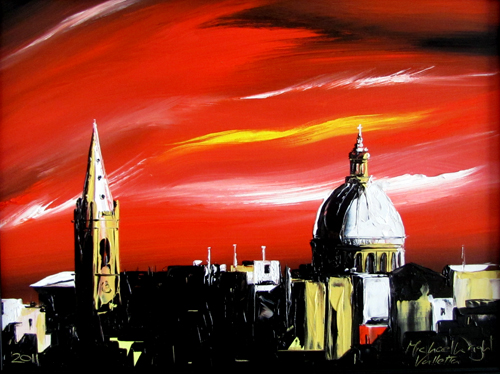
A smaller study of Valletta in red.
Opening remarks by H.E. Anne Quinane, Australian High Commissioner, at ‘Malta – An Australian Perspective.
An Exhibition by Michael Wright at the Hotel Phoenicia, Floriana, Malta on 20 May 2011.
It is my pleasure this evening to introduce Michael Wright and to open this exhibition of his oil paintings and watercolours under the title “Malta – An Australian Perspective”.
Michael is from Sydney where he studied commercial art at KVB College of Visual Communications in North Sydney, an institution now known as Raffles College of Design and Commerce. He then began a career in the print media, working as a news illustrator and political cartoonist both in Australia and London. He started at the Sydney Morning Herald in 1986 and after some years moved to London where he worked on The Times and The Daily Mirror, eventually becoming a political cartoonist for the The European. He has also produced art work for names like Ferrari and Benetton.
In 2004 Michael held his first solo exhibition at the Erin Art Centre on the Isle of Man where he was living at the time. The series of 20 watercolours included some inspired by the local natural environment and proved extremely popular. The exhibition was sold out at its conclusion.
Arriving in Malta 6 years ago, Michael began to experiment with the juxtaposition of images of Malta with those of Australia. This imaginative approach, which you can see examples of in this exhibition, captures in a most interesting way the special connections that exist between our two countries. Michael takes iconic landmarks or themes from each and marries them together in way that shows both their contrast and their complementarity.
Michael has secured a number of private commissions in Malta and one purchaser has described his work in these terms: “His vivid Maltese paintings exhibit extraordinary intensity of colour that skilfully juxtaposes light and shadow to capture the changing conditions of the Mediterranean.” It is easy to imagine that Michael’s compositions are of particular appeal to Maltese Australians because of the merging and contrasting of imagery from both countries portrayed in his works.
I commend this exhibition to you and and also take the opportunity to wish Michael well. His creative endeavour to explore the connections between Australia and Malta through his art will I am sure continue to delight many.